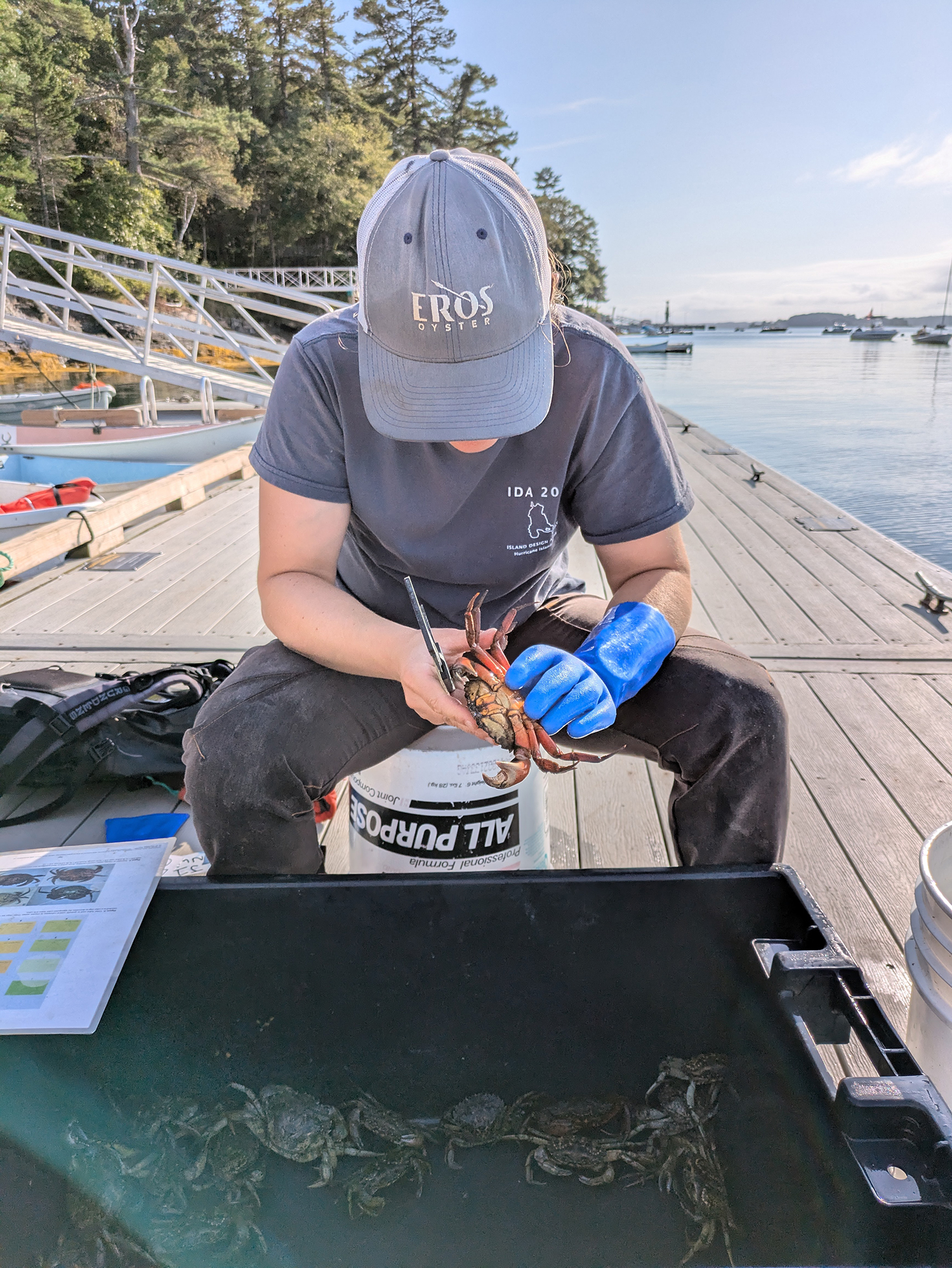Ethan Hatcher & Jessie Batchelder
European Green Crabs (Carcinus maenas) have been part of Maine’s coast for more than a century. These feisty crabs first appeared in the early 1800s, likely transported across the Atlantic Ocean by ballast water of ships. As waters warm, their numbers are rising, and pressure on our coastal ecosystems is increasing. Green Crabs are an incredibly successful invasive species as they can tolerate a wide range of salinities and water temperatures, are not picky eaters, and reproduce quickly. They pose a particular threat to many shellfish, including commercially important species, such as soft-shell clams and mussels. In addition to predation, they burrow into the banks of salt marshes, causing significant destabilization and erosion, and are a threat to eelgrass beds as they forage and burrow in the meadows, uprooting and clipping eelgrass in the process.
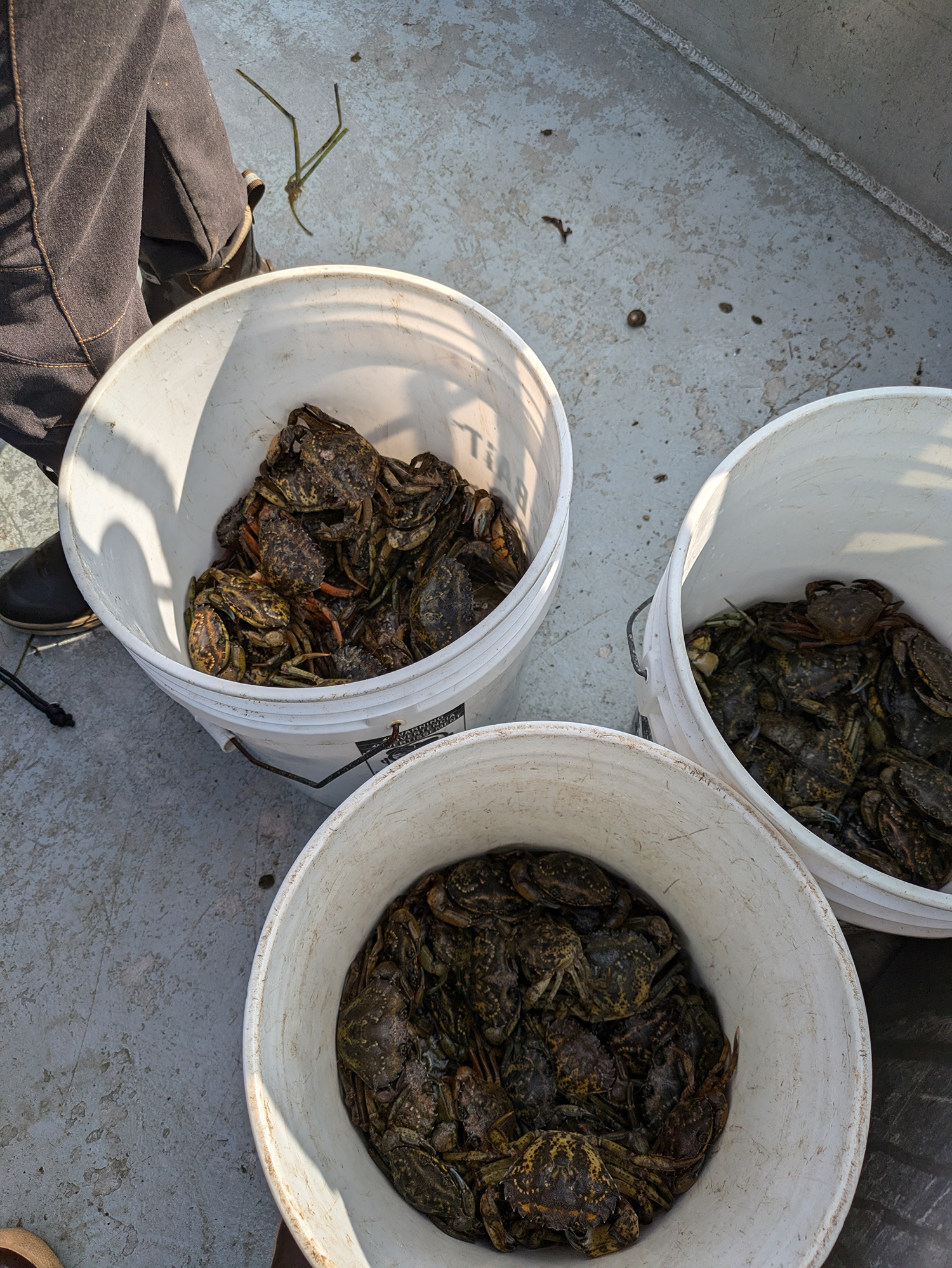
Eelgrass beds are a vital piece of our marine ecosystem, known as the “nursery of the sea”, as they provide habitat for a variety of species, including lobster, oysters, and flounder. They’re disappearing worldwide; Casco Bay alone has seen a 72% loss since 2001. In partnership with Casco Bay Estuary Partnership, Friends of Casco Bay, Maine Department of Environmental Protection, and Team Zostera, Manomet Conservation Sciences is working to understand the reasons for Eelgrass decline in Casco Bay. Manomet’s role in this work is to collect data on Green Crab populations to determine if and how green crabs are impacting Eelgrass beds.
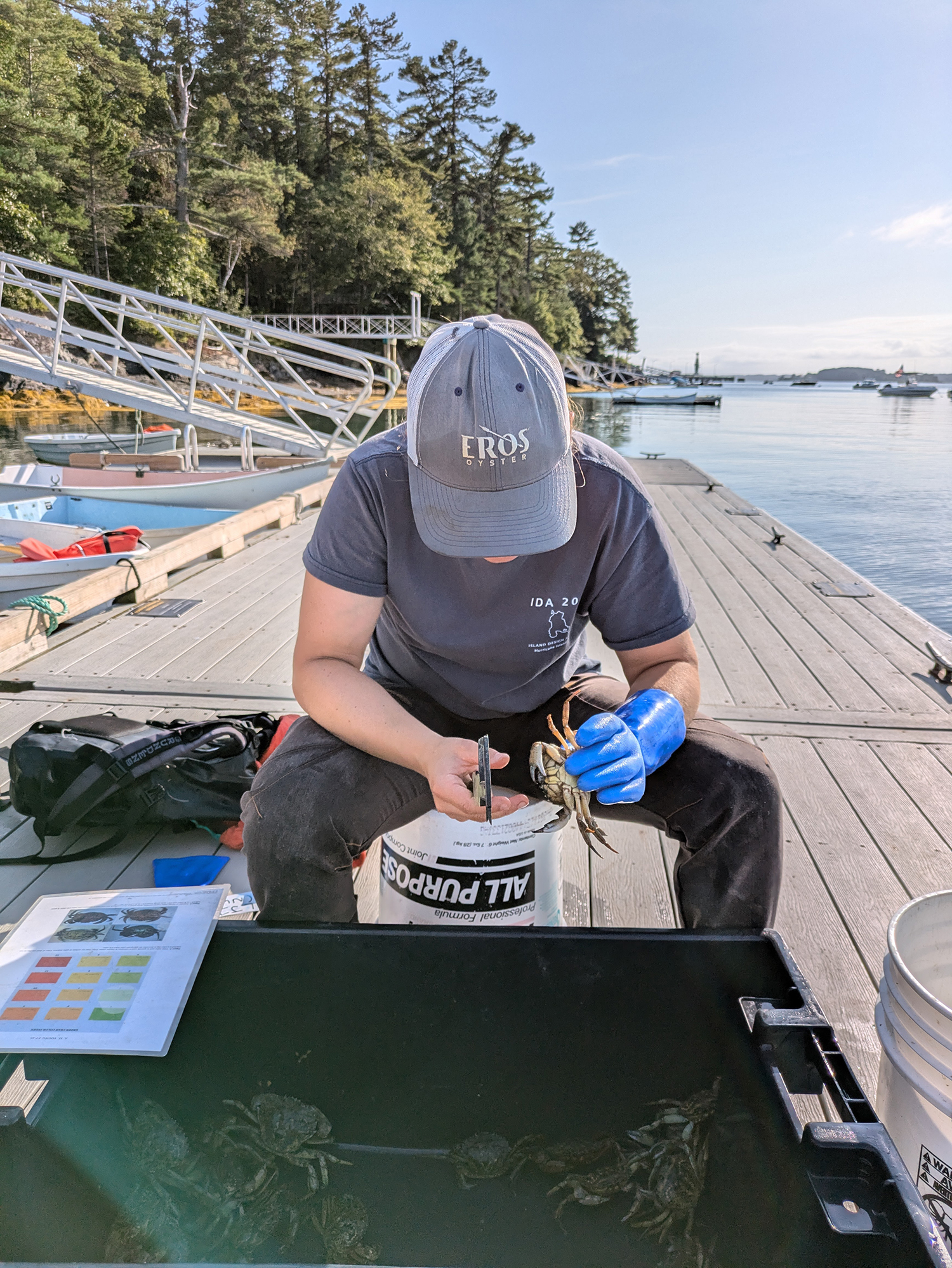
Since June 2024, we have been setting Green Crab traps in Eelgrass beds in Casco Bay. Once a month, the team goes out with partners from Madeline Point Oyster Farms, a local oyster farm based in Yarmouth, Maine, to set traps for a 24-hour periods. After hauling the traps, the team counts and sexes all crabs and measures a subsample from each trap. In addition to trapping crabs, GoPro video footage is captured during each trap set to document the behavior of Green Crabs on Eelgrass beds. The Green Crabs are only one possible factor for the decline of Eelgrass beds, but when combined with the work of our partners who are looking at water quality parameters, bed size, structure, and density, we hope to build a comprehensive picture of eelgrass beds in Casco Bay and localized threats that will help with future protection and restoration of these important habitats.
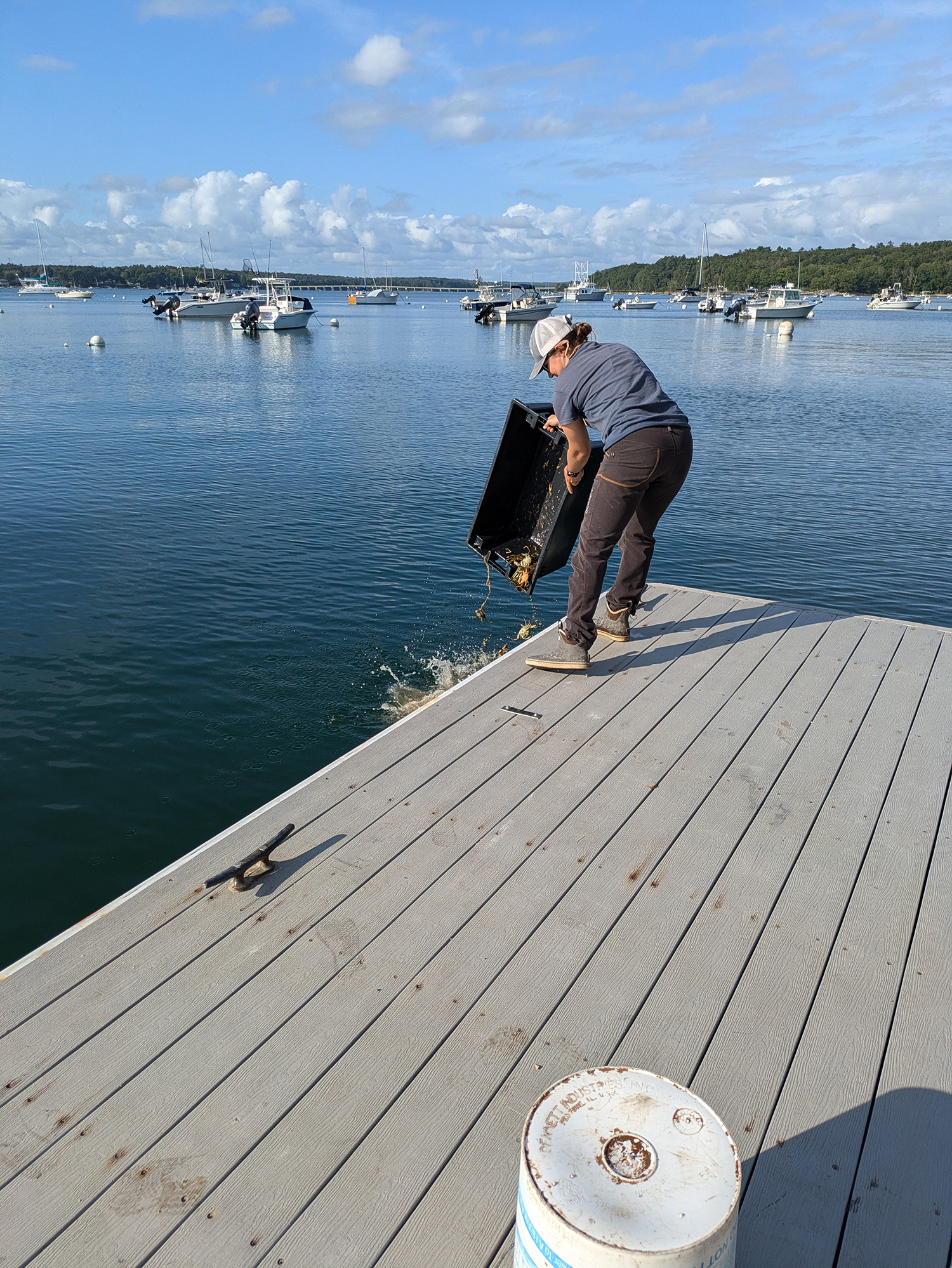
In addition to examining the impacts of Green Crabs on Eelgrass beds, we are also working to increase awareness and harvest opportunities for Green Crabs as a food source. Recently, Manomet Conservation Sciences worked with Greencrab.org and other partners on Green Crab Week, a celebration that brought together over 50 restaurants across 9 states to showcase the culinary delicacy of eating an invasive species.


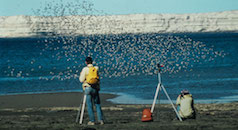
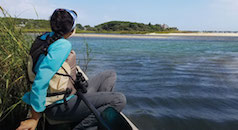
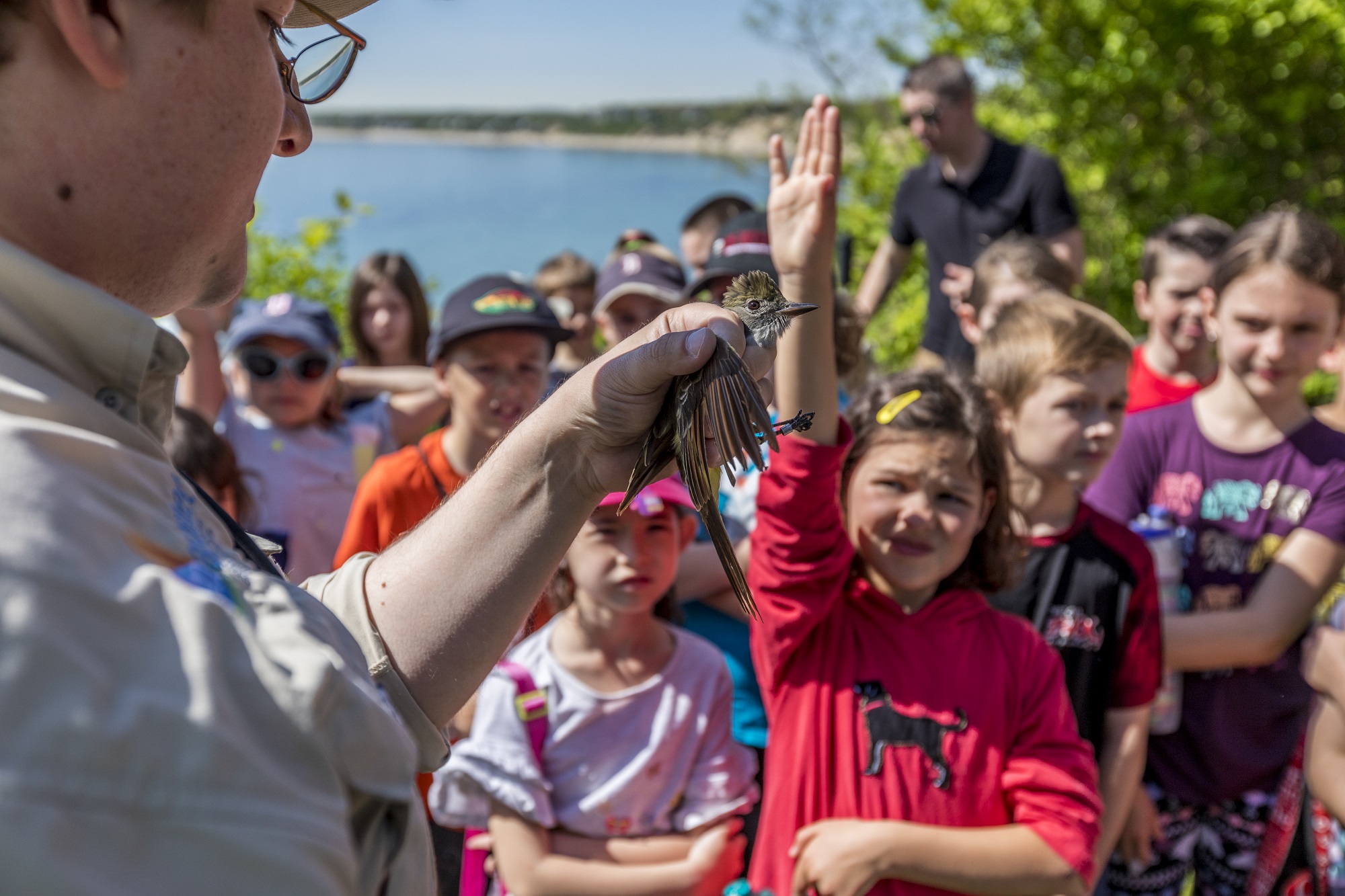
 Back to all
Back to all